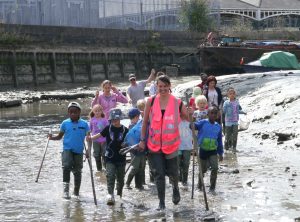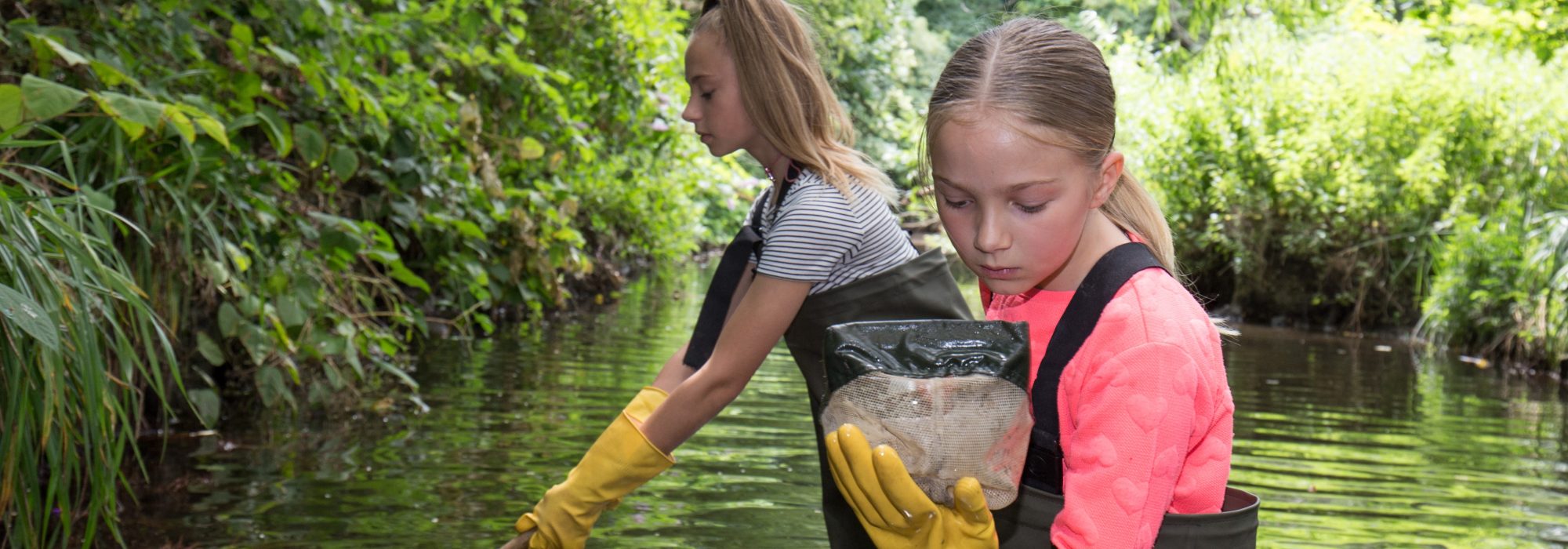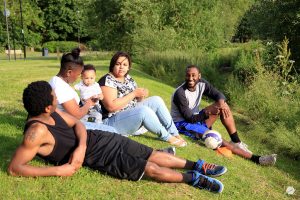Secret Wild Spaces map: our top river restoration sites
Connect to nature at these newly restored river sites. There’s plenty of inspiration: from new cycle routes and cool spaces for a family day out to quiet spots to watch wildlife on your lunch-break!
A huge new nature oasis in East London full of precious habitats including grassland, fenland and woodland. Explore the River Beam and Wantz Stream, and roam its 13 hectares with 8km of new foot and cycle paths!
A stretch of this river is now rewilded – released from its man-made straight channel to flow naturally through Richmond Park. Its gravel bed has been cleaned of silt, and attracts a variety of mini-beasts and fish.
Bury Lodge, Salmons Brook Catchment, Enfield
This wetland site has reconnected the Salmon’s Brook to its floodplain and when the new vegetation has grown it will be full of sedges, reeds and water-mint. A new cycle path beside the path is due to open late 2016.
Deptford Creek, Greenwich & Lewisham
You’ll often find sandmartins nesting and raising their young on a new sandbank at this historic spot is where the Ravensbourne finally meets the Thames.
Firs Farm Wetlands, Pymmes Brook Catchment, Winchmore Hill
This huge new wetland area of more than 700 acres within Greater London has brought a lost river, the Moore Brook, back to the surface. Admire the 100 extra trees and a new wildflower meadow from the new footpath and cycle path.
Glenbrook Wetlands, Salmons Brook Catchment, Enfield
Six new linked wetland basins have helped clean up the Glenbrook; a tributary of the Salmons Brook, which runs into the Lea. Not only have the wetlands massively cut pollutants, they are beautiful in their own right and are well-visited by dragonflies.
Grovelands Park Wetlands, Salmons Brook Catchment
Enjoy watching a once buried stream meander its way through woodland; this stretch of the Salmons Brook has been ‘daylighted’ so it can attract wildlife and delight visitors in Grovelands Park. A reedbed has also been created in one end of the lake, and new wetlands created.
Lordship Recreation Ground, Tottenham
Visit this magical new landscape created by bringing the lost River Moselle above ground; 400m of meandering river, backwaters and a patchwork of floodplain habitats. Not to mention the new community eco-building, café, theatre space and off-road bike track.
Mayes Brook, Mayes Brook Park, Barking & Dagenham
Visit the UK’s first Climate Change Park and rejoice in the rewilded Mayes Brook which winds its way through the heart of the park – where once it was hidden behind metal fencing. Look for fish resting in its backwaters and lose yourself in the hectare of additional native woodland.
Project Reedbed, Lee Navigation
Birdwatchers and nature lovers will find this an interesting place as this network of reedbeds along the Lee Navigation, in a highly urbanised area, not only enhances the wildlife habitat but is bringing greenery to the waterway.
River Crane, Causeway Open Space
In spring the gravel beds of this new River Crane backwater are black with spawning minnows. The backwater is helping the River Crane reconnect with its floodplain, as well as providing a great pit stop for fish, and a place for Londoners to take a breath.
River Effra, The Lost River Effra Project, Lambeth
The ‘lost’ River Effra catchment has a history of flooding, something the London Wildlife Trust is changing by working closely with local people to create gardens that are both practical and beautiful. They soak up rainwater, make the area more resilient to flooding and improve neighbourhoods for wildlife.
River Hogsmill Connectivity Project
Fish need to commute, just like humans do; in London, they need to swim from the Thames and up the tributaries. But weirs, bridge footings and other barriers in their way. This project has removed 17 of 18 on the Hogsmill, making it much more fish-friendly – and by the end of the project a fish will be able to commute from Kingston to Ewell without interruption.
A 500m stretch of river in the Hogsmill Local Nature Reserve has been turned into a haven for fish. Few places in the Hogsmill had been available to fish to live, because the area has been heavily developed in the past 50 years. Volunteers have played a huge part in making changes.
River Pool, Linear Park, Lewisham
Once upon a time this river looked like a pond – it had been so straightened and widened. Nowadays it flows like a real river, and new plants are colonising its edges. Sunlight bounces off its clearer, flowing water and provides great new views for Linear Park.
River Ravensbourne, Ladywell Fields, Lewisham 
Go paddling in a sun-dappled river, meandering through meadows and visited by kingfishers – all within Zone 3!
River Thames, Greenwich Peninsula
City estuaries have lost most of their natural habitats. But here in Greenwich, reeds, sea aster and other saltmarsh plants have returned to the estuary shoreline once more, delighting visitors, attracting wildlife and boosting flood defences.
River Wandle, Carshalton, Butter Hill
Watch brown trout swimming in a clear chalk stream – within London! The work carried out on this stretch of the Wandle won it the 2016 UK River Prize and it’s acknowledged to be the healthiest stretch of water in London.
River Wandle, Wandle Park, Croydon
Lie down on the river valley slopes and enjoy the bubbling sounds of a clear chalk stream as it meanders across the beautiful Wandle Park in Croydon.
River Wandle, Wandsworth Riverside Quarter
Where two rivers meet: for the first time in many years, you can get close to the spot where the River Wandle meets the Thames. This old industrial site has been rewilded, and its hard edges softened, as part of a new development.
River Wandle, volunteer-led restoration
Volunteers were involved from the start of a project to the finish on a stretch of the River Wandle, designing their own project and applying for permits. They learned about river restoration techniques, unstraightening a channel, and created new habitats for fish and other wildlife.
Stanmore Marsh Wetlands, Harrow
This lost, historical but under-used space has been transformed by creating new wetland habitats, rehabilitating a seasonal pond and restoring a section of the Edgware Brook. It is now an attractive space used for schools education and is becoming a haven for wildlife.
Yeading Brook, Yeading Meadows, Hillingdon
The Yeading Brook is now a bubbling, happy stream once more, bathed in sunlight when the sun comes out. Watch its recovery continue, as aquatic plants spread, making the most of the increased light levels and look out for birds and other wildlife.
After being closed to the public for almost 200 years, an operational reservoir that supplies drinking water to millions of Londoners has been transformed into a place of huge biodiversity interest and community enjoyment.

